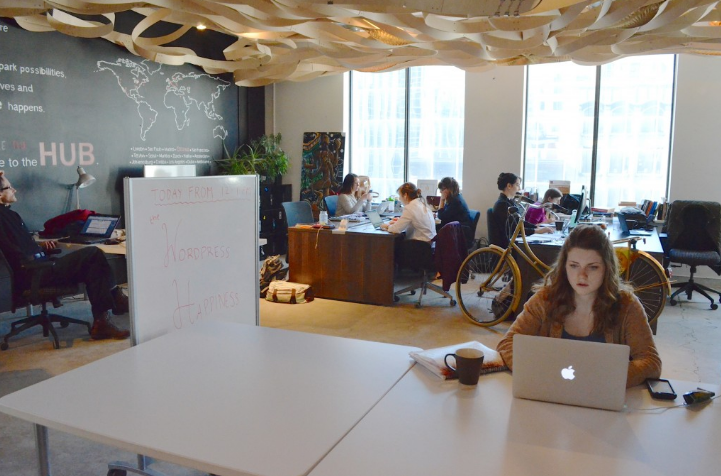The open-concept office is dead.
That’s what Laura Entis argued in a May 2016 Fortune article.
She points to the fact that open-concept offices negatively impact employee productivity and well-being and instead suggests adopting a hybrid approach to the workplace. “The next-generation office combines private offices, cubicle banks and truly open floor plans,” she writes. This, she says, is in addition to communal areas and soundproof rooms.
While the open-concept office may have been a great idea in theory, it didn’t exactly pan out as such.
In a 2014 opinion piece for The Washington Post, Lindsey Kaufman said her personal performance had “hit an all-time low” thanks to her new 9-5 real estate in an open-concept office.
The open-office has become a reality for a growing number of North American companies who believe that physical barriers negatively impact communication and creativity. Kaufman points to findings from the International Facility Management Association that 70 per cent of U.S. offices have no or low partitions (and that figure has likely climbed since). Not surprisingly, many of these companies are in the tech realm, including Google, Yahoo, eBay, Facebook and American Express. Kaufman points that Michael Bloomberg, who has long said that open-concept offices promote transparency and fairness, was ahead of the game in his passion for the supposedly forward-thinking workplace design.
But that doesn’t mean he was right.
While beneficial to a degree for coworkers in constant communication (emails and Slack messaging can be tedious at the best of times), the open concept can be completely distracting. What open-concept office are good for, says Kaufman, is maximizing a company’s space while minimizing cost, and for the ability of bosses to keep a closer look on their employees.
When it comes to the employees, however, she says that all open-concept office spaces do is offer a false sense of improved productivity, pointing to one 2013 study that found that workers in open offices are frustrated by distractions that lead to poorer work performance.
Privacy – or lack thereof – plays a major role.
Nearly 50 per cent of the workers surveyed in the 2013 study reported the lack of sound privacy as a major problem, while more than 30 per cent complained about the lack of visual privacy.
Kaufman points to the fact that the supposed “ease of interaction” problem with colleagues that the open offices claim to fix was cited as a problem by fewer than 10 per cent of workers in any type of office or setting. Actually, the people who were less likely to cite inabilities to communicate with their colleagues as an issue were those with private offices. Kaufman points to another study that concludes that “the loss of productivity due to noise distraction … was doubled in open-plan offices compared to private offices.”
Another pitfall of the open-concept office is that the relaxed, casual nature can invite a more lax, laid-back approach to work and decrease attention spans.
Not to mention, open-concept offices also make people more susceptible to illness – and there’s nothing productive about that.
[ninja_form id=104]
[ad_bb1]



